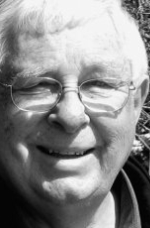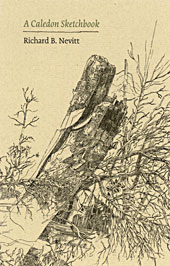The Porcupine's Quill
Celebrating forty years on the Main Street
of Erin Village, Wellington County
BOOKS IN PRINT
A Caledon Sketchbook by Richard Nevitt
Presented in the form of a journal and including ruminations and more than sixty pen-and-ink drawings, A Caledon Sketchbook illustrates chance moments of solitude and articulates a sense of communion with the spiritual side of the Caledon Hills. North and to the west of Toronto, this rolling landscape is home to artist Richard Nevitt. Working from nature is what he loves best, and in this collection his drawings demonstrate the degree to which a simple line scratched with a pen nib can elicit a deep appreciation of a geographic place.
Author comments
For the past thirty years I have recorded in journals my feelings and thoughts as they relate to the landscape of the Caledon Hills. The journals provide me with insightful germs of ideas for more elaborate works to be completed at leisure in my studio. At a very early stage of my career I was fortunate to be able to examine some of the journals of the Group of Seven. Their sketchbooks provided me with an understanding of the way in which many of their better-known compositions had evolved. I soon realized that the field journal is the first repository for many of the creative ideas that are essential to the spirit of any completed work.
Every artist must penetrate beneath the surface of a subject. For me, a strong classical training in drawing and anatomy provided the counterpoint for much of my more speculative research. Many of my former teachers were both figurative and landscape painters who embraced a passion for their culture and their country, equally.
Apart from a constant enchantment with the work of the Group of Seven, I also discovered another important mentor in the person of Charles Burchfield, an American realist from Buffalo, New York State. Burchfield’s unique brand of magic realism was not just about story telling but rather very much engaged itself with the sensory tonalities of nature. His journals drew me into closer touch with my own sense of perception through an appreciation of the orchestrated symbolic patterns that became his signature method of presenting empathy with nature.
For Burchfield, the moods of nature became no longer mere transcriptions of tonal ranges but rather an exuberant expansion of the geometric possibilities of angles, lines and circles. The seasons are described in gestural dances of shifting celebrations of tempo moods. Colours encompass and caress the imagination toward a spiritual transformation of harmony.
In my own journals you may find the sort of daily small journeys that enable me to appreciate some of these unique forces of nature. For Arthur Lismer, for example, nature is always cyclic, caught in a tension between life and death, and embodied in the entanglement of texture and structure. These anatomical overtures strongly appeal to my current visual vocabulary. My role as an artist is to transform with the use of all my senses a new platform of awareness that is well ordered from a fabric of complexity and confusion.
—Richard Nevitt
Unpublished endorsement
‘In Richard Nevitt’s hands the act of drawing becomes something more than a mechanical recording of the natural world.... Each of Richard’s drawings takes us on a very personal journey of discovery as he delves into the living elements of landscape and its transcendent aspects.... In the turn of a line, a scrap of contour, an oblique hint of mass, form and volume, Nevitt lends his subjects a living quality, a breath of life and of vitality. And above all, A Caledon Sketchbook insists that drawing has little to do with style and aesthetics. Drawing is, in its essence, a means to the end of understanding ourselves and of our place in the world.’
—Tom Smart
Richard Nevitt was born in Montreal, but educated in Canada, the USA and Latin America. At an early age, after seeing his first Group of Seven exhibition in an unlikely venue in Caracas, Venezuela he already felt a strong pull to the visual arts.
Visits to galleries and museums were frequent in his youth. From 1959 to 1963, Richard pursued his studies at the Ontario College of Art. During his formative years he was invited to teach and to learn the craft of teaching under the watchful eye of Jim Williamson, head of the Toronto Art Gallery School. In 1965 he was invited to teach artistic anatomy and drawing part-time at the Ontario College of Art. Under the guidance of his mentor professor Nancy Joy, illustrator of Grant’s Atlas of Anatomy, Richard entered the ‘Art as Applied to Medicine’ program. His love of anatomy and other medical subjects sustained him throughout his teaching career.
In 1968 the Canadian Government invited Richard to document peace-keeping activities with the Canadian Armed Forces in Cyprus. The following year an invitation was extended to illustrate naval operations in Halifax, Nova Scotia. Many of these drawings currently reside in the War Museum archives in Ottawa. Richard served on the faculty at the Ontario College of Art for forty years. In 1993 he was the recipient of the A. J. Casson Award for Distinguished Service from the Ontario College of Art Alumni Association in recognition of an outstanding and dedicated contribution to the cause of education in art.
Now retired, Richard continues to work at his home studio in Alton. He also gives workshops at the McMichael Canadian Art Collection in Kleinburg.
The Porcupine's Quill would like to acknowledge the support of the Ontario Arts Council and the Canada Council for the Arts for our publishing program. The financial support of the Government of Canada through the Canada Book Fund (CBF) is also gratefully acknowledged.





